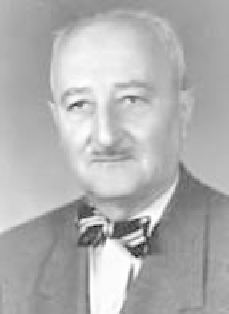Cryptography Reference
In-Depth Information
However, not only was the device a commercial failure, but the stock market
crash caused Vernam to lose his job at AT&T. He then went to work for an
organization that later merged with Western Union. From that time, he was
granted some sixty-five patents, among which was the fully automated telegraph
switching system. He was even visionary enough to have invented one of the
first versions of a binary digital enciphering of pictures. However, for all these
amazing achievements, he died in relative obscurity on February 7, 1960, in
Hackensack, New Jersey, after years of battling Parkinson's disease.
The Friedmans
Others who had been on the periphery of the discovery of the one-time
pad also had a major impact. William Frederick Friedman
2.10
(1891-1969)
(see Figure 2.13) was born in Kishinez, Russia, on September 14, 1891. In
1892, his father fled the antisemitic regulations in Czarist Russia, and his fam-
ily joined him in Pittsburgh the following year. (Actually, William had been
born with the name Wolfe, but his father changed it to William after he became
an American citizen.) William obtained his bachelor's degree from Cornell,
then joined the Riverside Laboratories (which today would be considered to
be a “think tank”), outside Chicago, in 1915. There Friedman met Elizabeth
Smith (1892-1980), whom he married in 1917 (see Figure 2.14). One of the
projects being researched at Riverside was the contention that hidden messages
in Shakespeare's works proved that Bacon was the real author (see page 36).
2.11
However, the Friedmans soon turned their attention to cryptology. William
was training cryptologists at Riverbank, and for course material he wrote
eight publications (which are collectively known as the
Riverbank Publications
).
Today they are highly regarded as containing
the basic essentials of cryptological material.
Perhaps his greatest cryptological contribu-
tion (and he thought so himself when he was
looking back over his career) was his con-
ceiving of the
Index of Coincidence
, which
appeared in his monograph no. 22 of the
numerous ones that he published. The im-
portance of this discovery was not only that
it introduced a statistical methodology for
cryptanalyzing polyalphabetic ciphers, but
also, it demonstrated the intimate link be-
tween cryptology and mathematics, a link
that would get more entwined as the twen-
tieth century unfolded. Friedman's Index of
Coincidence (for a ciphertext
Figure 2.13: William Friedman.
C
) is defined as
2.10
Figures 2.13-2.14 are courtesy of the National Security Agency
Hall of Honor
. See:
http://www.nsa.gov/honor/index.html
.
2.11
Friedman and his wife debunked this claim in an excellent topic [98], called
Shakespearean
Ciphers Examined
, published in 1958.


Search WWH ::

Custom Search